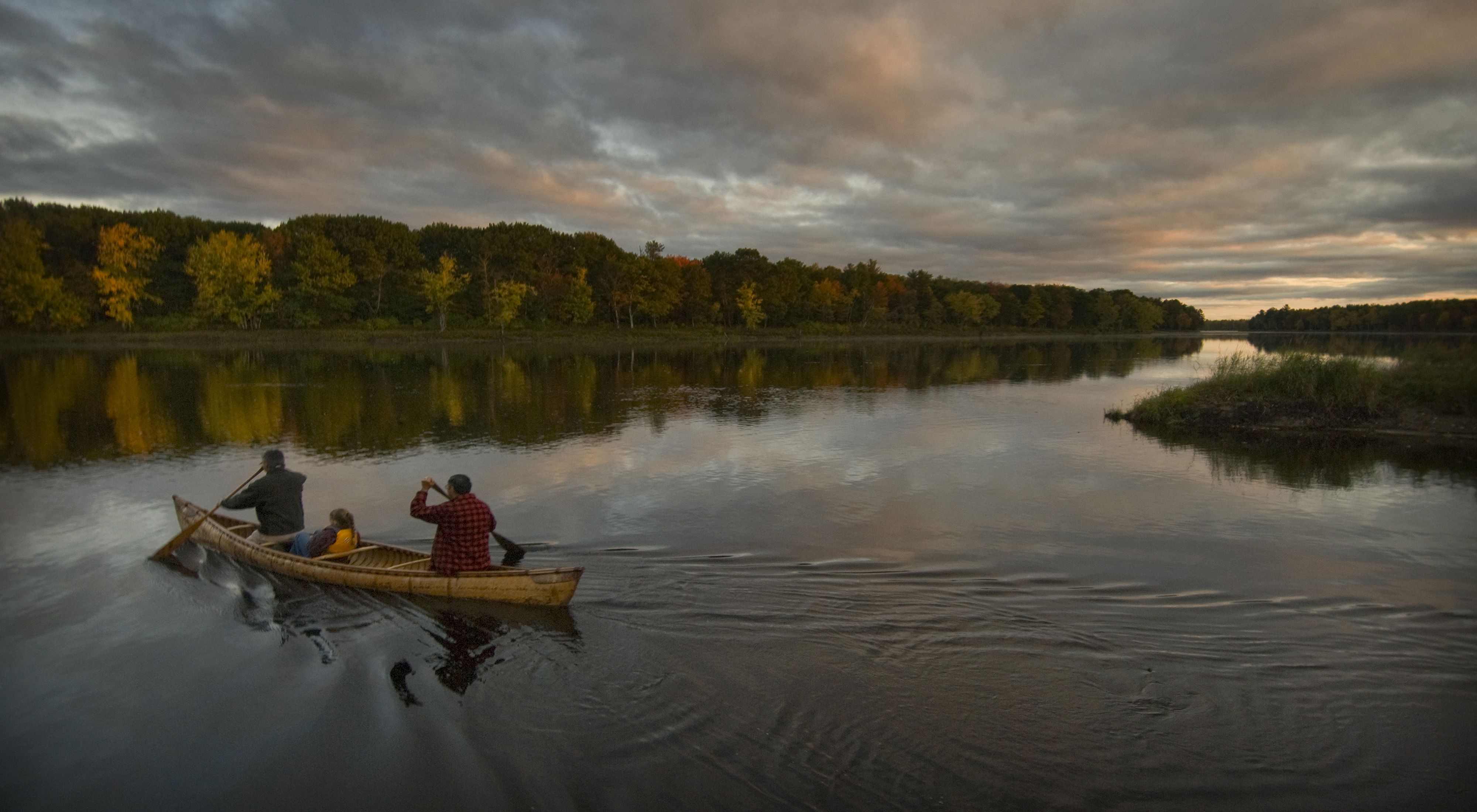
Article courtesy of The Nature Conservancy
An Unprecedented Project
The restoration of the Penobscot River is an unprecedented and innovative effort to remove two dams and build a state-of-the-art fish bypass around a third. As a result, thousands of miles of habitat along the Penobscot and its tributaries have been re-opened for 12 native species of sea-run fish. Because of this tremendous project, a multitude of benefits are being realized by biological and human communities in and along the river including skyrocketing fish runs, renewed historic recreational opportunities, and restored connections throughout the watershed.
The seeds of the project were sown in 1999 when PPL-Maine (formerly Pennsylvania Power and Light) purchased a series of dams in Maine. PPL approached the Penobscot Indian Nation who brought in several conservation organizations in hopes of creating a more cooperative and creative model for the dam relicensing process. Discussions with those groups led to a remarkable announcement four years later calling for removal of the Penobscot’s lowermost dams while maintaining hydropower production by increasing power generation at other dams elsewhere.
Partners for Restoration
The 2004 agreement outlining the dam removal process was signed by an unprecedented array of partners that came together to form The Penobscot River Restoration Trust, a nonprofit organization that worked with a variety of state and federal agencies to implement the restoration project. This partnership includes the Penobscot Indian Nation, American Rivers, Atlantic Salmon Federation, Maine Audubon, Natural Resources Council of Maine, Trout Unlimited, the Department of Interior, the State of Maine, and PPL-Maine. The Nature Conservancy joined as a full partner in 2006.
An Ambitious Path
In the first phase of the project, the Penobscot River Restoration Trust purchased the Veazie, Great Works, and Howland dams in December 2010. With support from NOAA and funds from the American Recovery and Reinvestment Act of 2009, and about half in private funds, phase 2 started in June 2012 with the removal of the Great Works Dam. Removal of Veazie Dam was completed in 2013 and a natural river channel that bypasses the Howland Dam was opened in late 2015. These efforts, along with a new fish lift installed by Brookfield Energy at the Milford Dam, thousands of miles of spawning habitat re-connected the main stem of the river to native fish for the first time in nearly 200 years.
The Fish Are Coming Back
Before the dams were removed, river herring counted as they travelled upstream to spawn hovered between a few hundred and few thousand a year. In 2023, more than 6 million of these important fish were counted in the Penobscot watershed during the spring migration!
Monitoring the Results
Researchers and conservationists around the world consider this project a prototype for other river restoration efforts, so it is important to fully understand and study the impacts of dam removal and bypass on life in and around the river including the people whose lives revolve around it. That’s why Conservancy staff are taking the lead as the Trust’s science team, charged with organizing and conducting research and monitoring efforts for the project to better understand the ecological impacts of this work.
A Model for Others to Follow
The Penobscot River Restoration Project resolved longstanding disagreements over how best to restore native sea-run fish and their habitat while balancing the need for hydropower production. It stands as a model of cooperation, innovation, and hard work for the benefit of nature and people.
We’re Not Done Yet
Work continues in the headwaters, removing barriers where roads meet tributary rivers and streams while improving those crossings so they better stand up to increasing flooding from big storms. Thanks to partners and supporters, more habitat is opening to fish and more people are seeing the benefits.
https://www.youtube.com/embed/0nu0v8oyLqA?rel=0&start=0&modestbranding=1&showinfo=0&enablejsapi=1 Butch Phillips (3:45) On restoring the Penobscot River
The Nature Conservancy is a nonprofit, tax-exempt charitable organization (tax identification number 53-0242652) under Section 501(c)(3) of the U.S. Internal Revenue Code. Donations are tax-deductible as allowed by law. Global sites represent either regional branches of The Nature Conservancy or local affiliates of The Nature Conservancy that are separate entities. This site is protected by reCAPTCHA and the Google Privacy Policy and Terms of Service apply.
© 2024 The Nature Conservancy Terms of Use | Privacy Statement | Charitable Solicitation Disclosures | Mobile Terms & Conditions | Notice of Nondiscrimination
